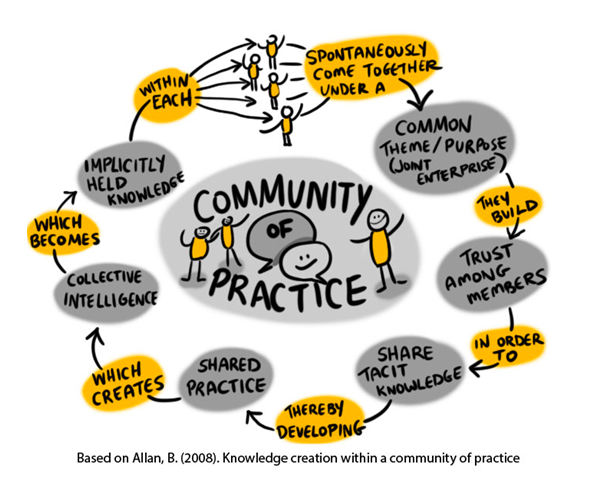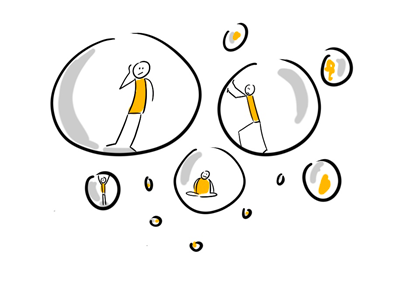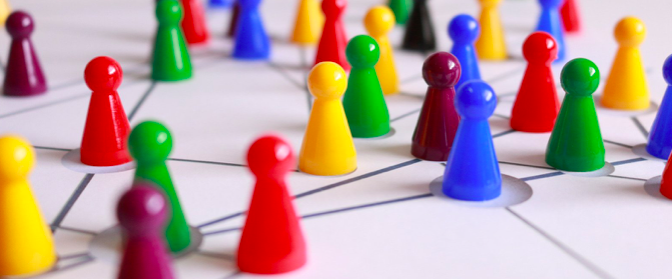Four steps to a lifetime of continuous learning and collaboration!
Many Teachers that have been teaching for a few years have a network that consists of limited professional connections outside of their discipline of teaching. In Ontario Extend the Collaborator module gives four steps that one can follow to create or expand their Personal Learning Network, PLN.
Working with Powtoon
I decided to analyze the Collaborator Module of the Ontario Extend in the form of a Powtoon 3 min video. Although I am a visual person and often enjoy presenting information in the form of a presentation, poster or sketch, I was completely out of my comfort zone creating a video to present my ideas. What I found most challenging using the platform was deciding how much time is enough for each element of the video. Even though the Powtoon video is only 3 minutes long, a lot of time went into creating it. I found the platform to be very user friendly. I really enjoyed the process of creating the Powtoon video and found the platform to be a great tool that is creative and interesting.
Step 1: Explore
In the Explore step of the collaborator module a professional must ask the most important question of all, the “Why?.” Why should anyone go through the trouble of collaborating? Why should you make an active effort to create a personal learning network? Teachers can use their PLN to learn from people that are exploring the teaching profession from a new or experimental perspective. They can get advice and share ideas with one another, and most importantly they can create and collaborate together to build projects that they would not be able to do on their own. The video Where Good Ideas Come From by Steven Johnson explains that networks are needed to develop, spread and explore ideas.

In addition, the idea of communities of practice is also explored in this section. A community within a focused area where individuals learn together while sharing strategies, tools and resources. In my undergraduate years of study learning was a very individualistic endeavour, however this practice of learning is limiting in a real world workplace. In my personal experience, I am always trying to expand and develop my PLN, I think of my PLN has helped me in many areas of my professional life, becoming a teacher, and personal life, becoming a parent. The “Why?” for me is very clear the Extend Ontario module does a good job at answering that question too.
Step 2: Engage
In Extend Ontario the second step of creating a PLN is to “engage”. Teachers must figure out what their personal interest are, who is an expert in that particular field and must connect and engage with these individuals. The PLN is firmly based and organized around personal or professional learning interests, that are unique to the particular person. The teacher must determine the direction of their own learning and mindfully build the PLN that is most useful to them for personal and professional growth and understanding in an area that interests them. Here the theory of connectivism is also explored. Connectivism states that learning can be a socially connected process where you connect different ideas online, build upon them and add your own perspective while improving and deepening your understanding through the PLN. In my personal experience, I do this all the time through multiple social network platforms like Facebook, Instagram and Twitter. At the beginning of this year I was completely unaware of many resources that are available to teachers. Through my PLN I have discovered and used many wonderful resources that will improve my teaching and help me throughout my career.
Step 3: Extend
Extending and cultivating your PLN should be an ongoing process. In this section of the module there are two concepts that are explored, one is the importance of connecting with your network in the common gathering place for your discipline and joining conversations there through contributing ideas, engaging with others’ work and giving and receiving feedback.

In addition, this part of the module also explores “filter bubbles” and the importance of connecting with people that are influential but might have an opposite view from yours. It is important to make these connections so that your PLN is diverse, and you encounter ideas that will challenge your thinking. I have experienced the “filter bubble’ before, especially around social issues. I tend to follow very liberal thinkers and I have been often shocked to find out how much support many conservative ideas have around my community. I now consciously make an effort to burst my own filter bubble so I can have a more balanced view of many issues.
Step 4 Empower

Empower yourself by creating a map of your PLN. Creating a map of your PLN will give you a fresh view of your connections and will help set goals regarding the direction you would like to extend your PLN. Although I have never set down and drawn a map of my PLN, I am constantly seeking and exploring networks based on my professional and personal learning interests. I find many of the questions I have on a topic have been already explored in online communities build around those topics, and my learning exponentially grows once I join a community focused on a topic of interest.
